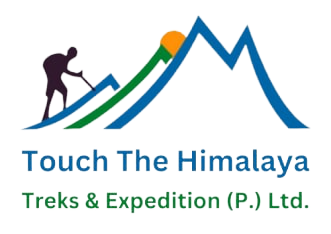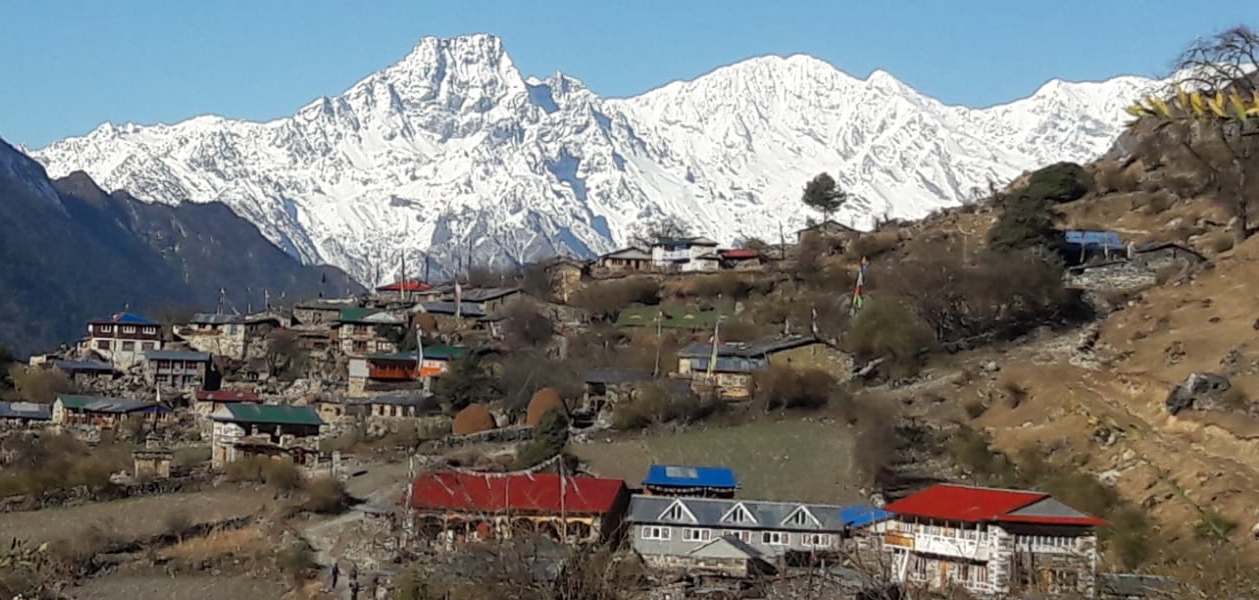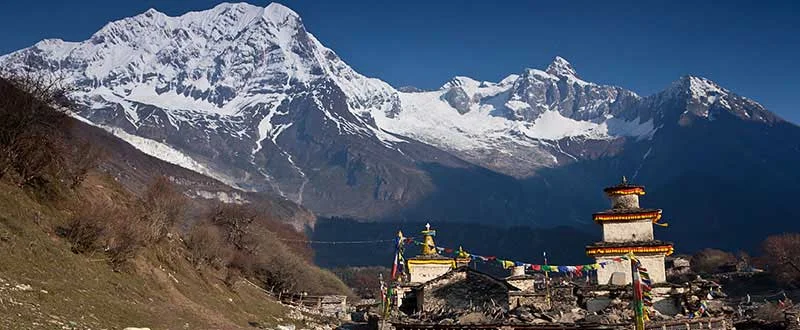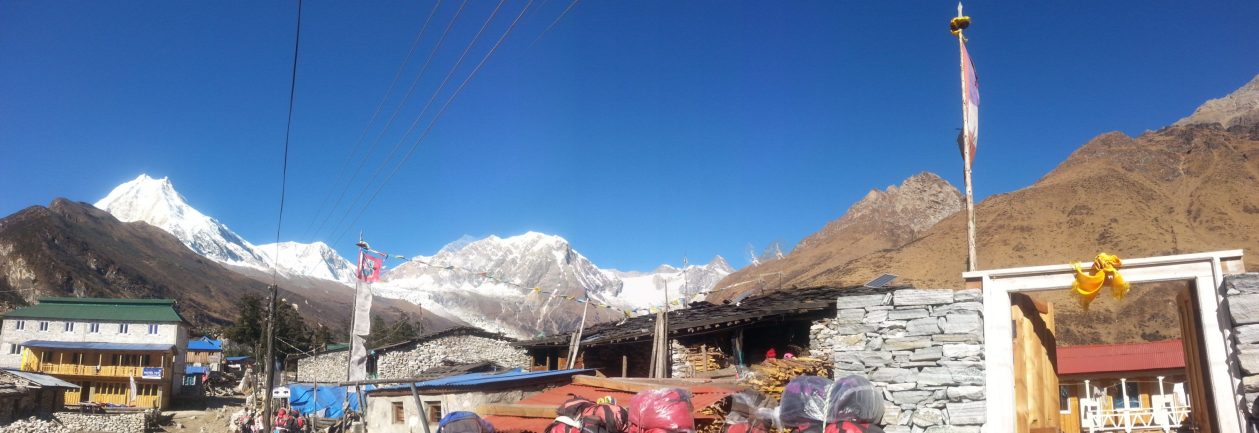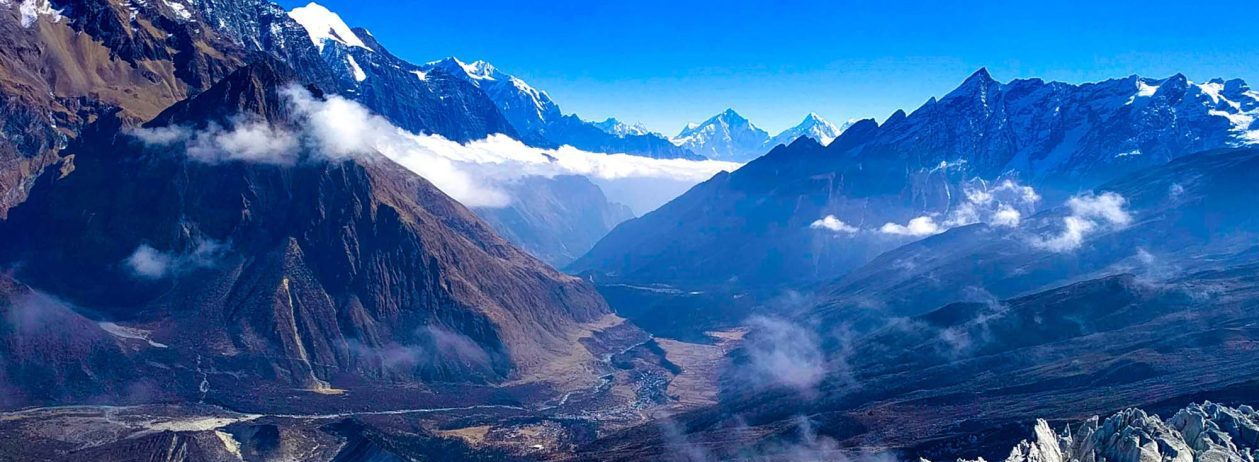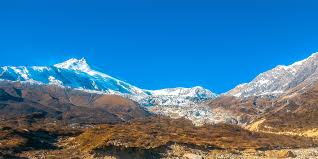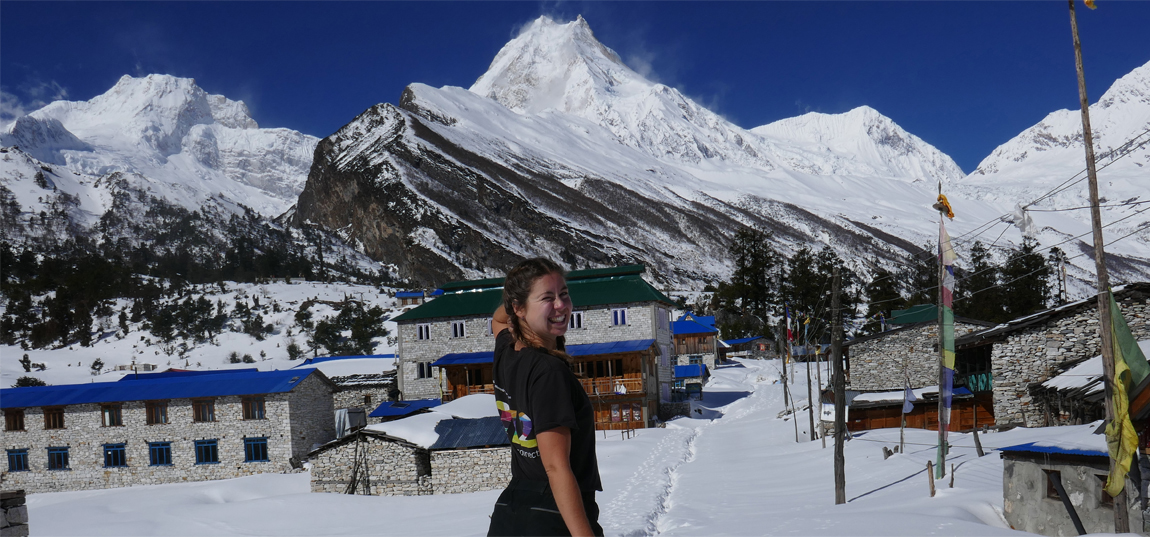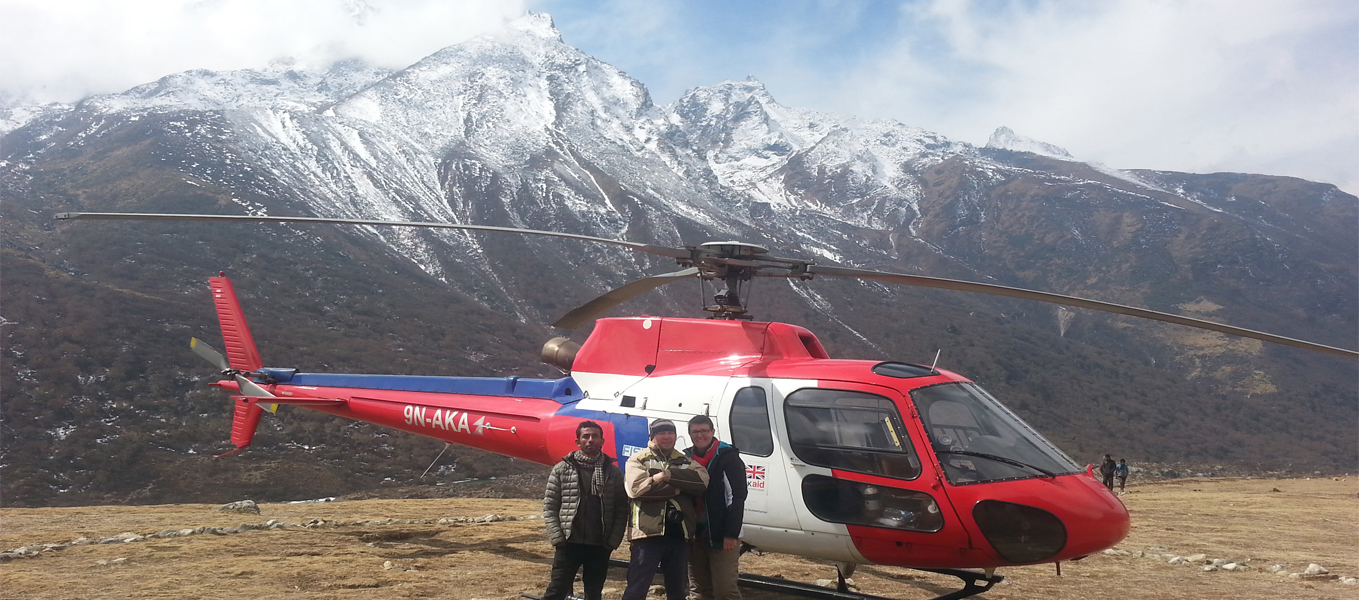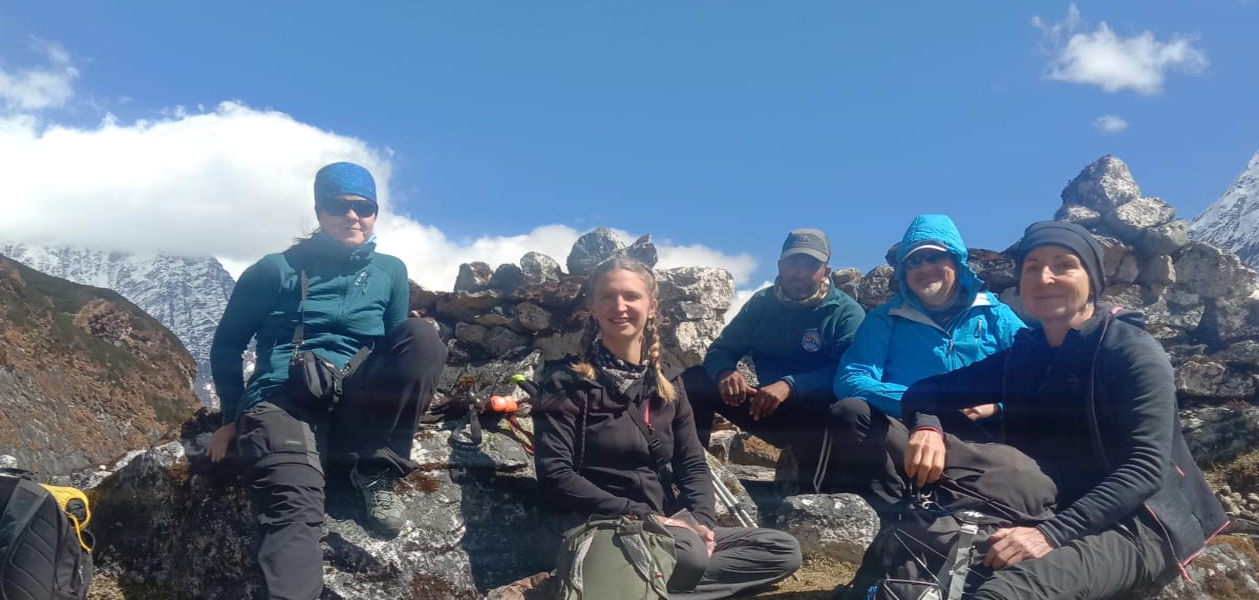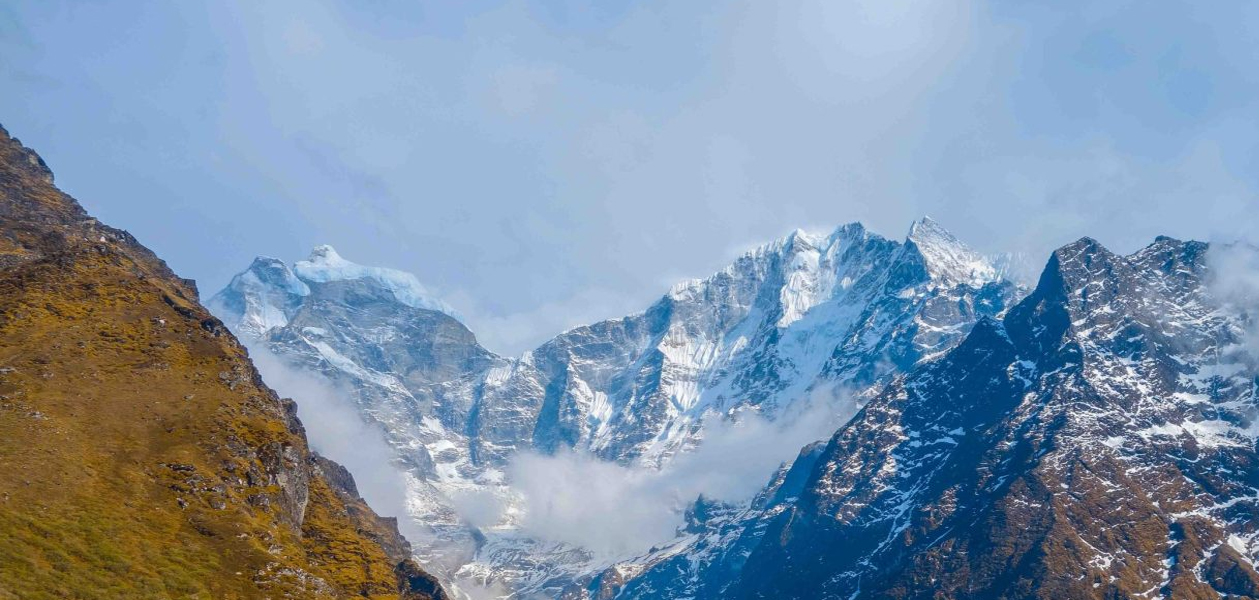Tsum Valley Trek -17 Days
Rich cultural and natural legacy-
Duration
17 Days
-
Activity
Trekking
-
DifficultyModerate Trek
These treks are slightly more challenging than easy treks and require a moderate level of physical fitness. The altitude may go up to 4,000 meters, and the terrain can be rugged and steep at times. The trails are usually well-defined, but there may be some uphill climbs and rocky sections.
-
Max. Altitude
4900 M
-
Starts
Kathmandu
-
Ends
Kathmandu Or Pokhara
-
Group Size
Minimum: 2 pax
-
Best Season
March-May/Sept-Dec
PRICE PER PERSON
- 1 PAX US$1035
- 2 PAX US$944
- 3 PAX US$872
- 4 PAX US$863
- 5-10 PAX US$848
- 11-20 PAX US$816
- Highlights
- Itinerary
- Route Map
- What Included / Excluded
- Dates & Availability
- Photos & Videos
- FAQ's
TRIP HIGHLIGHTS
- Breathtaking views of various Himalayan peaks, including Manaslu (8,156 meters), Ganesh Himal (7,422 meters), Himalchuli (7,893 meters) and Shringi Himal (7,187 meters).
- Traverse through deep valleys, cross suspension bridges and hike along terraced fields.
- Encounter various species of flora and fauna, including blue sheep, Himalayan thar, snow leopards and a variety of bird species.
- Offers a glimpse into the traditional Tibetan Buddhist culture and lifestyle.
- Ancient Buddhist monasteries, including the revered Mu Gompa, Rachen Gompa and Milarepa’s Cave.
- Opportunity to stay in local teahouses, interact with the locals and gain insights into their traditions, customs, and daily lives.
- Tatopani Hot Springs, located near Jagat, a popular spot to soak in warm, mineral-rich waters.
- Chhokang Paro, a beautiful village located in the Tsum Valley, offers a glimpse into traditional Tibetan-style architecture with stone houses, prayer flags and terraced fields.
- Fusion of Unique Nepali and Tibetan culture in the local area.
- Beautiful Monasteries high altitude lakes, glaciers sustaining views of mountains.
- Unspoiled and non-commercialized trekking route.
Tsum Valley Trek Overview
Tsum Valley Trek is a rural valley in Nepal’s Gorkha district. The valley has a rich cultural and natural legacy and is encircled by the Himalayas. The valley is still one of Nepal’s least popular trekking sites even though it just opened to hikers in 2008 and is considered a gem hidden in the mountains of Nepal.
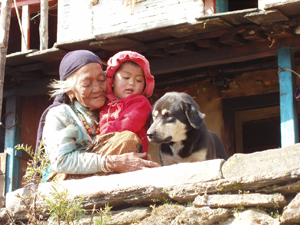
Tsum Valley Trek is renowned for its long-standing Buddhist customs and culture. Many monasteries, Chortens (Buddhist shrines), and mani walls may be seen throughout the valley (stones inscribed with prayers). A well-known Buddhist saint by the name of Milarepa is thought to have meditated in this valley while en route to Tibet. Starting in the little village of Arughat in the Gorkha area, the journey to Tsum Valley Trek takes between 13 and 15 days. A number of tiny settlements, including Chumling, Chhekampar, and Mu Gompa, are traversed throughout the walk.
Mountains including Ganesh Himal, Sringi Himal, and Boudha Himal line the valley’s perimeter. The chance to encounter the local culture and traditions is one of the trek’s special features. The majority of the residents of the Tsum Valley Trek area are of Tibetan descent, and they have a lot of cultural similarities with Tibet. The journey offers a chance to learn about the locals’ way of life and traditions, and they are friendly and accommodating.
In conclusion, Tsum Valley in Nepal’s Mountains is a hidden treasure that provides a distinct and genuine trekking experience. The valley is a must-visit spot for adventurous tourists seeking an authentic Nepali experience because of its rich cultural and natural history, secluded location, and breathtaking vistas.
Table of Contents
TSUM VALLEY TREK DETAILS
The 17-day Tsum Valley Trek takes place in Nepal’s western region, in the district of Gorkha, in the country’s north. The valley is situated at the base of the Sringi and Ganesh Himal mountain ranges. With mountains towering above 7000 m, the Tsum Valley is a hidden gem.
GEOGRAPHY:
Starting in the village of Arughat, the Tsum Valley Trek follows the Budi Gandaki River. With mountains on all sides, the valley is a far-off and lonely area. The valley measures roughly 19 kilometers in length and is located between 2,000 and 4,000 meters above sea level. The Manaslu Conservation Area and the Annapurna Conservation Area are both located to the west, respectively, of the valley.
ALTITUDE:
The Mu Gompa, which is located at a height of 3,700 meters, marks the summit of the moderately challenging Tsum Valley Trek. To prevent altitude sickness, it is advised that trekkers allow enough time to acclimatize to the high altitude.
LOCATION:
The Tsum Valley Trek is located on the Tibetan border in the northern Gorkha district. The village of Arughat, which is roughly a 6-hour drive from Kathmandu, is where the journey begins. The trip takes you through several traditional Tibetan villages in the remote and isolated Tsum Valley, giving you a look into the people’s distinctive way of life.
PHYSICAL FEATURES:
The Tsum Valley Trek is noted for its amazing natural beauty and unusual geological features. A rocky landscape with steep cliffs and deep canyons surrounds the valley. The valley’s river has sculpted incredibly slender canyons and gorges that provide breathtaking views. The valley is renowned for its varied flora and wildlife, which includes a blend of subtropical and alpine plants. The Himalayan tahr, snow leopard, and musk deer are just a few of the threatened species that call the valley home.
CULTURE AND PEOPLE:
There are various rare and endangered wildlife species that may be found in the Tsum Valley Trek area. Red pandas, Himalayan black bears, musk deer, snow leopards, and Himalayan tahr are a few of the creatures that are frequently seen in the area. The Himalayan monal, pheasant, and eagle are just a few of the bird species that call this area home.
Additionally, the Tsum Valley area is renowned for its conservation efforts to preserve its distinctive biodiversity. The 1,692-square-kilometer Tsum Valley Conservation Area, which was created in 2007, aims to preserve the distinctive flora and animals of the area.

Tsum Valley people are renowned for their friendliness and generosity toward guests. They are mostly subsistence farmers, and their diet comprises dairy products like yak butter and cheese, as well as locally farmed grains like barley, buckwheat, and potatoes. Yaks play a significant role in their way of life and are used in their animal husbandry practices.
The social structure of the Tsumbas is based on extended family and clan ties, and they have a strong sense of community. They observe their own customs and holidays, such as Dhacyhang, which honors the harvest, and Lhosar, which is observed on the Tibetan New Year.
The Tsum Valley Trek area has gained popularity as a hiking location recently, which has helped the locals. To make sure that the local environment and culture are not negatively harmed, sustainable tourism measures must be used.
Wildlife & Flora:
Flora:
Dense forests, including rhododendrons, pine, juniper, fir, and birch, can be found all around the Tsum Valley region. A number of medicinal plants, including Cordyceps (Yarsagumba), a rare herb found in the upper Himalayas, can also be discovered in the woodlands. The area is renowned for its distinctive alpine vegetation, which includes a wide range of moss, lichen, and shrub species.

Fauna:
There are various rare and endangered wildlife species that may be found in the Tsum Valley area. Red pandas, Himalayan black bears, musk deer, snow leopards, and Himalayan tahr are a few of the creatures that are frequently seen in the area. The Himalayan monal, pheasant, and eagle are just a few of the bird species that call this area home.
Additionally, the Tsum Valley area is renowned for its conservation efforts to preserve its distinctive biodiversity. The 1,692-square-kilometer Tsum Valley Conservation Area, which was created in 2007, aims to preserve the distinctive flora and animals of the area.
ACCOMMODATION & LOGISTICS:
Homestays: In Tsum Valley, staying with a local family is the most common form of lodging. This not only gives you the chance to learn about the customs and way of life in the area, but it also earns some money for the local residents. Homestays are straightforward but cozy, with tidy beds, minimal bathroom amenities, and authentic Nepalese food.
Guesthouses: In addition, there are a few lodges and guesthouses in the bigger communities that provide more fundamental services like private rooms, hot showers, and a restaurant providing simple meals.
Camping: The Tsum Valley offers camping for those who choose to bring their own tents. Along the trail, there are designated campsites with running water and minimal amenities like toilets.
Guides and Porters: During the Tsum Valley trek, it is highly advised that you employ a local guide and/or porter. The guides can help with issues like lodging and food and are informed about the area’s culture and surroundings. Your bulky backpack can be carried by porters, allowing you to fully enjoy the trek.
Permits: Together with the regular trekking permit for the Manaslu Conservation Area, a special permit is needed to enter the Tsum Valley zone. The Nepal Tourism Authority and authorized trekking companies both sell these permits.
Food and Drink: Little tea houses and lodges along the path sell drinks and food. To guarantee that the water you consume is safe to drink, it is advised to carry a water filter or purification pills.
Transportation: The Tsum Valley trek begins in the village of Arughat, which is reachable from Kathmandu by bus or jeep. To travel more comfortably, it is recommended to hire a private jeep because the road to Arughat is rough and bumpy.
PERMITS:
As Tsum Valley is a restricted area in Nepal a special permit is required for trekkers to enter the valley. The permit is called the Tsum Valley Restricted Area Permit, and it costs USD 35 per person per week. Additionally, trekkers must pay USD 20 and USD 30 respectively for the Manaslu Conservation Area Permit (MCAP) and the Annapurna Conservation Area Permit (ACAP). Through a Nepali trekking company that is registered, these permits can be acquired.
Trekking Permits & Entrance Fees
EQUIPMENT:
As a moderately challenging journey, the Tsum Valley Trek requires careful planning and the right gear. An excellent backpack, reliable hiking boots, layers of warm clothes, a sleeping bag, trekking poles, and a headlamp are all important items. A first-aid kit, sunblock, sunglasses, and a hat are also advised to be brought along. Necessary Trekking Equipment
Trekking Routes:
Two of the high mountain passes that must be crossed on the Tsum Valley walk are the Ngula Dhojhyang Pass (5,093 meters) and the Mu Gompa Pass (3,890 meters). Trekkers must be in good physical shape and well-prepared due to the long trekking days and challenging terrain.
All the trip grading can be view Here.
If you have any confusion for booking process please visit our booking process
Itinerary
Arrival in Kathmandu
Trek preparation and introduce with trekking staffs
Kathmandu to Machha Khola by jeep/Bus 8/9 hrs (930 m./3051ft)
Maccha Khola to Jagat (1340m/ 4395ft) 6-7 hours.
Jagat trek to Lokpa (2,240m) walking 5-6 hours.
Lokpa hike to Chumling (2,386m/7,827ft) 4/5 hours walking
Chumling trek to Chhokan Paro (3,030m/ 9944ft) 5/6 hours walking
Chhokan Paro trek to Mu Gompa (3690 m./12139ft) 6/7 hours walking
An Extra Day Hike to Tibet Border 5093 mtr and sorroundings 7/8 hours
Mu Gompa trek back to Chhokan Paro (3,030m/ 9944ft) 4/5 hrs walking
Chhaikampar To Gompa Lungdang an additional add-ons, 7/8 hours
An Extra Day Hike to Ganesh Himal BC 4900 mtr and back to the same Cam
Gompa Lungdang To Lokpa 7/8 hours walking
Lokpa To Jagat(1340m/ 4395ft) about 7 -8 hours wallking
Jagat to Machhakhola walking hours 5 to 6
Machhakhola to Kathmandu Drive by Bus/Jeep (8-9 Hours Driving)
Final Day, Transfer to the international airport
Itinerary Note:
This itinerary is just the guide line, it can be changed (longer or shorter) as per our client's wishes, fitness, ground reality and weather condition. If you're not satisfied or have an alternative plan please feel free to discuss it with us By Clicking :- ASK QUESTION or COSTOMIZE YOUR TRIP.What's Included / Excluded
Cost Incluldes
- Airport pick up and drop off by Car, jeep, Hiace or Bus. Depends on the number of arrives.
- Complimentary welcome or farewell dinner according to the suitability of our client’s time.
- Beginning two nights stay on arrival in Kathmandu in tourist standard hotel with breakfast included (twin share basis)
- Kathmandu to Machha Khola (trekking starting point) and way back to Kathmandu transfer by Bus,
- All necessary trekking and restricted area permit & fees, (Entry Permit, Manaslu conservation area permit, Tsum Valley Restricted area special permit and TIMs cards).
- Three meals a day during the trek (Breakfast/Lunch/Dinner)
- All accommodation during trek in Tea house/ Lodge.
- An experienced, English-speaking, government-licensed, first aid trained trekking guide and assistant guide (10 trekkers: 1 assistant guide)
- Expert Manaslu local porter (2 trekkers: 1 porter)
- Duffel bag, (to be returned after trip completion), complementary trekking maps. If needed down jacket and sleeping bag will be provided in rent.
- Staff costs including their salary, insurance, Equipment, transport, food and accommodations
- Rescue arrangements if necessary.
- Basic First-aid kit (carried by trekking guide)
- All government and local taxes for Trekking, Agency service charge and government tax/vat.
- Achievement Certificate
Cost Excludes
- International airfare and Nepal visa fee.
- Lunch and Dinner in Kathmandu
- Extra night accommodation in Kathmandu because of early arrival, late departure, early return from mountain (due to any reason) than in the scheduled itinerary
- Personal insurance which covers medical, emergency evacuation, loss or theft of property.
- Personal gears and equipment.
- Personal expenses such as laundry, hot showers, battery charging, Wifi, etc
- Entry fees and costs in sightseeing (temples, monasteries, etc)
- Tips and gratitude provided to guide and porter.
Fixed Departure
Can't find trip as your Schedule Date?
- Above mentioned departure dates “AVILABLE”‘ means these dates are currently open for bookings for the particular Trek. If the mentioned dates are not suitable with your preferred date, you can make your own private trip by clicking the box billow in the bottom.
- A date “GUARANTEED” means that we give guarantees that the costumers will be able to start theirs trek on the specified date, regardless of whether the seats are fully booked or not.
- “LIMITED”‘ Status refers to a type of seats booking for the trek, that has been certain seats available to book
- In the status, “CLOSED” means that the Trekkers seats are fully booked and there are no more seats available for new booking. Trekkers may be put on a waitlist for a chance to get a seat if there are cancellations unless your are requested to plan your own private trip by clicking the box billow in the bottom.
Photos & Videos
FAQ's
ABOUT MANASALU
Do I need permits for Manaslu & Tsum Valley Trek?
CLIMATE OF MANASLU & Tsum valley Trek?
BEST TIME FOR MANASALU & TSUM VALLEY TREK?
HOW LONG TREK GOES FOR?
What permits I need for the Manaslu & Tusm Valley Trek?
Can I trek solo?
Why do I need a guide and porter for MANASLU & TSUM VALLEY Trek?
Is there any ATMs facility available during MANASLU & TSUM VALLEY trek?
How long is the Manaslu & Tusm valley trek?
What about altitude sickness during the MANASLU & TUSM VALLEY trek?
What types food will be available?
Amazing Tsum Valley Manaslu Trek1
January 7, 2023Amazing Tsum Valley Manaslu Trek
We organized our Three-week trip to Tsum Valley and Manaslu Trek with Touch The Himalaya company with their guide Arjun, We were happy to have him with us as a companion to guide us and also to get lots of information about culture, traditions, animals, plants... Arjun managed everything during the trek and was always aware that I got all we needed. The contact with the agency before and after the trek was uncomplicated, they made sure I was feeling comfortable and safe. Thank you so much for a wonderful experience!


14-days Manaslu circuit with Arjun and Sandip
June 12, 201914-days Manaslu circuit with Arjun and Sandip
Me and my boyfriend decided to go for 14-day trek around Manaslu starting early May and I approached Touch The Himalaya asking for help with arranging the trip. Madan was incredibly helpful and patient to answer all our questions and he provided a lot of helpful tips and details, since we were not experienced with high altitude trekking, so we felt really confident prior to the departure.The trekking turned out to be the most amazing experience we've ever had, not only due to the beautiful sceneries, but most of all thanks to our amazing guides - Sandip and Arjun!
They taught us about the Nepali language, culture and customs, disclosed many hidden gems and introduced us to local people, which were all as warm-hearted as our wonderful guides.
Sandip, while being the rising star of Nepali music industry, had the most gentle personality and he was the best trekking partner one could wish for. Also, he is able to carry a 110kg person for half an hour. :)
Arjun knows the Manaslu region like the back of his hand and he would do everything to make sure you are having a good time.
Throughout the whole trek both of them were attentive and considerate, they adjusted the pace and itinerary according to our needs so that we felt comfortable at all times. Thanks to their experience and perfect planning we were able to successfully cross Larke pass while having fun the whole time.
At the end of the trek, we considered both of our lovely guides as part of our family and we are hoping to return very soon to visit this beautiful country again.
Date of experience: May 2019

Touch the Himalaya Manaslu Trek Review
May 24, 2019Touch the Himalaya Manaslu Trek Review
Touch the Himalaya Manaslu Trek ReviewWe recently travelled to Nepal to trek the Manaslu Circuit with Touch the Himalaya. (April 2019)We initially contacted Madan at Touch the Himalaya four weeks prior to our planned trek. He promptly replied and was always helpful, informative and meticulous as to the planning and requirements of our trip including sending us a detailed itinerary and packing list as well as organising all the transfers and trekking permits. All we had to do was turn up!
Through the ongoing communication with Madan, we were able to build a strong relationship with him prior to our arrival in Kathmandu. He greeted us at the airport adorning us with garlands of marigolds and fresh fruit, such a lovely welcome, then drove us to the hotel in Thamel.
The following day we met our wonderfully knowledgeable guide Arjun and our very reliable and helpful porter Bikram (Chicken-tiger) who happily showed us around Kathmandu for a day before our trek departure.
We are a middle-aged couple and admittedly were not exactly in peak physical condition and therefore we were quite nervous regarding our ability to complete the challenges of the two-week trek. However, Arjun intuitively judged our level of ability early on and was very caring in his advice and strategies to assist us with our daily trekking in order to give us the best chance of completing the full circuit and it worked!
From the outset, given their extensive and intimate knowledge of the route, Arjun and Bikram expertly guided us through a number of challenging and difficult sections. They were also both very familiar with the Manaslu district which allowed us to have a very rich cultural experience with many of the local tea house owners and their families.
Arjun was always careful to ensure that we ate well throughout the trip. We did not suffer any illness or sickness whatsoever and we believe this was largely due to Arjun and his thoughtful approach to the planning of every day of the trek.
Even with the burden of our pack, Bikram always went the extra mile for us, often offering to lighten our load further when the going got tough, he was ever thoughtful of our needs.
All three men were true gentleman and wonderful company.
We are very pleased to recommend Arjun and Bikram for any treks in Nepal. Arjun had a very deep and thorough knowledge of all of the flora and fauna are that we saw. He was always happy to give advice and answer any questions we had.
We can honestly say that without the care that Arjun and Bikram provided for us throughout our trek we may have not had such a successful and completely enjoyable time in Nepal.
If we return to Nepal, which we dearly hope we will, we would definitely engage the services of Touch the Himalaya, Madan, Arjun and Bikram.
We can strongly recommend this company as they will ensure you will maximise your enjoyment and memories of your time in Nepal.
Alice and Joe
Date of experience: April 2019

